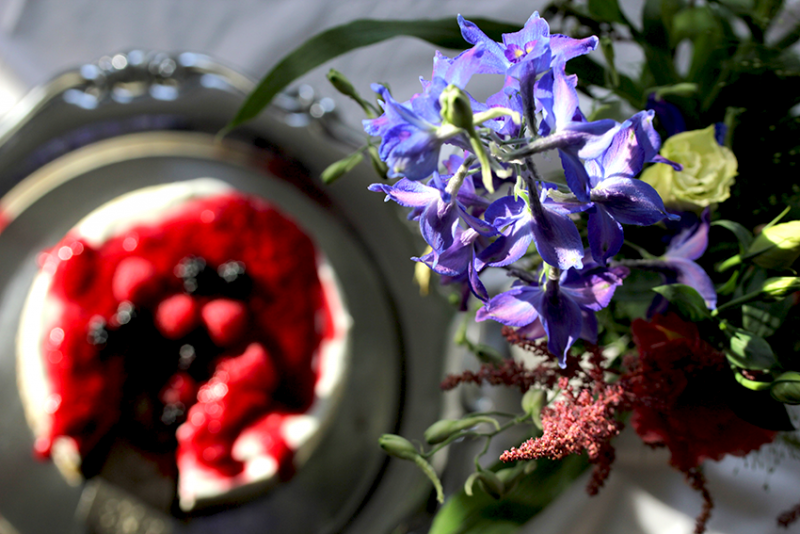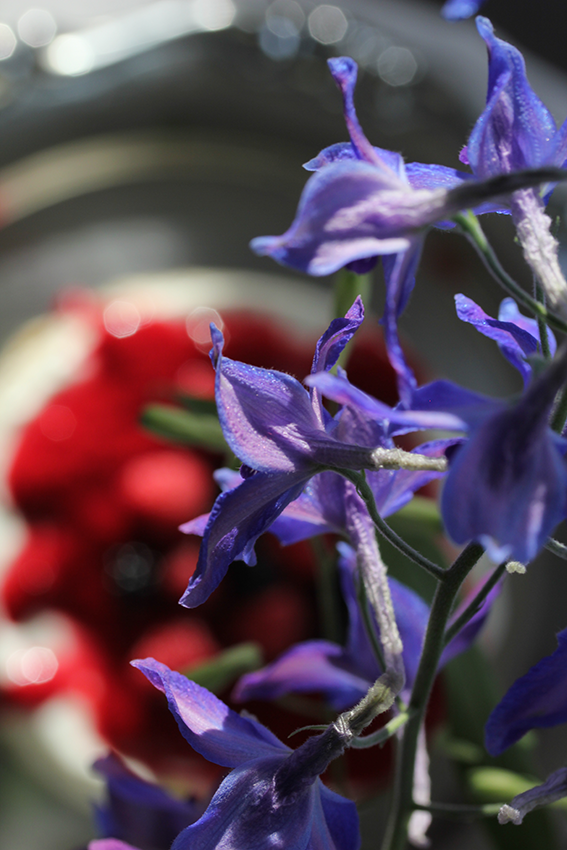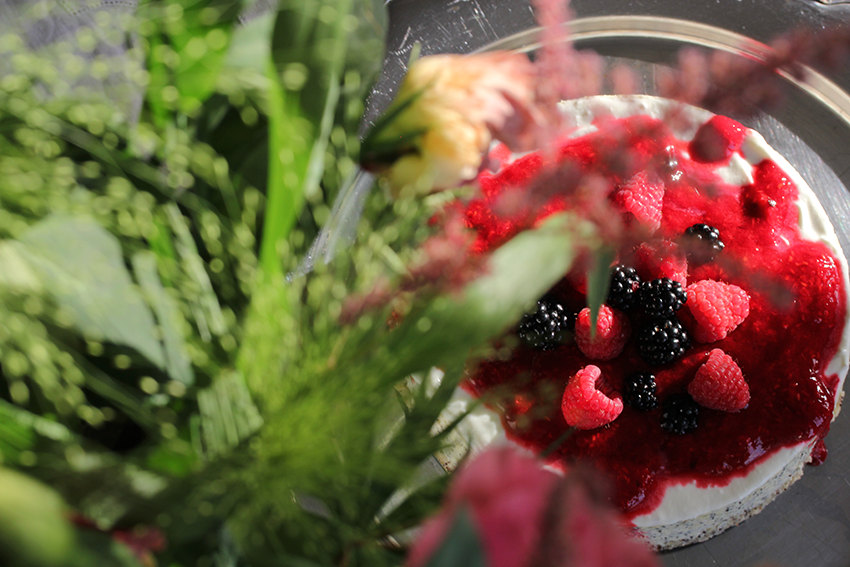As I haven’t been baking for a rather long time, this was a little adventure. Things didn’t get easier when I became quite ambitious and wanted everything to be perfect, since this was to be my mum’s birthday cake.
One of her favorite cakes is a tray bake from Thuringia. It’s basically a kind of cheesecake made with a yeast dough base, a filling of Quark (fromage frais) and Schmand (crème fraîche), different fruits such as cherries and gooseberries, or poppy seeds. The mixture is then topped with beaten egg whites and more Schmand. Often German and Central European poppy seed cakes tend to be quite dry. Not so in this case! The poppy seed mixture is cooked with semolina and milk before it is added to the Quark-Schamnd mixture. A very rich and creamy matter…
I wanted to create a lighter version of that regional speciality of which every bakery in Thuringia has its own (and quite different recipe). My aim was to make it sugar and gluten-free and I also wanted to play around a little with sheep’s milk products. Although I stopped eating vegan, I am still cautious about dairy products. My advice would be to always use full-fat (only then you are enjoying a whole product) milk from pasture-fed (this I consider especially important: a grain diet is not natural for cows and their milk will be less nutritious) cows that is not homogenized. Also cultured dairy products (such as yoghurt, kefir, quark) seem to be much more beneficial. If you want to learn more, I really recommend Sally Fallon’s Nourishing Traditions.
In comparison to cow’s milk, sheep’s milk contains considerably higher amounts of protein, calcium and vitamin B12, it also has a much higher fat content (but like goat’s milk these are mainly medium-chain fatty acids, that also possess antimicrobal virtues. Don’t be scared off by the high fat content, read more about saturated fats here). What is more, the proteins that can be hard to digest in cow’s milk are smaller in goat’s and sheep’s milk and are therefore much easier digestible (read more about it, here).
For the base:
80g fine almond meal
30g finely chopped almonds
50g butter, room temperature
1 tbsp poppy seeds
2 tsp zest of an organic lemon
1 generous pinch of sea salt
For the filling:
600g sheep’s quark (or fromage frais, ca. 8g fat)
250g greek style sheep’s yoghurt (10g fat)
juice and remaining zest of one lemon
1 large organic egg
40g poopy seeds
4 tbsp granulated stevia
pinch of sea salt
1 tsp ground vanilla bean/unsweetened vanilla powder
For the topping:
100g sheep’s quark
juice of 1/2 lemon
150g frozen raspberries
50g mix of fresh berries
Ideally you should start to make the filling the night before by pouring the yoghurt and the quark onto a large cheesecloth, muslin or very fine sieve and place it over a bowl in oder to strain out the whey. This is really an important step! I didn’t do it over night and my cake lost quite a lot of ‘water’ during baking. You can keep the whey to ferment vegetables or to soak your grains in!
On the next day, preheat the oven to 170°C. Line the base and the sides of a 20 cm spring-form tin. Mix all the ingredients for the base with your hands until you receive a dough consistency (only very carefully add more butter, the almonds and poppy seeds are already quite fatty). Press into the base of your baking tin and bake for 8-10 minutes until it starts to turn golden. Remove from the oven and let cool down.
Combine the ingredients for the filling in a bowl and carefully whisk them together. Spoon onto the cooled base and return to the oven for 20-30 minutes. The mixture should be pulling away from the sides and the centre should still be custard-like (don’t overcook!). Let cool down completely. I achieved a much better result after placing the cooled cake in the fridge for two hours to firm up.
To make the topping, whisk quark and lemon juice together until creamy and spread on top of the cake. Purée the frozen raspberries with a hand-held blender. Add a little more stevia if you like. Spoon on the cake and decorate with fresh berries.



